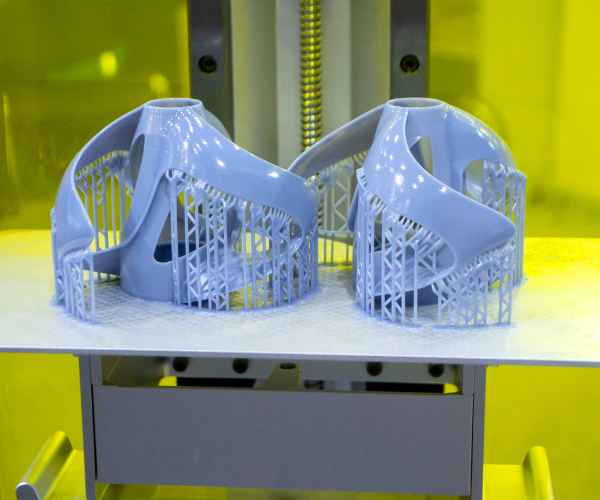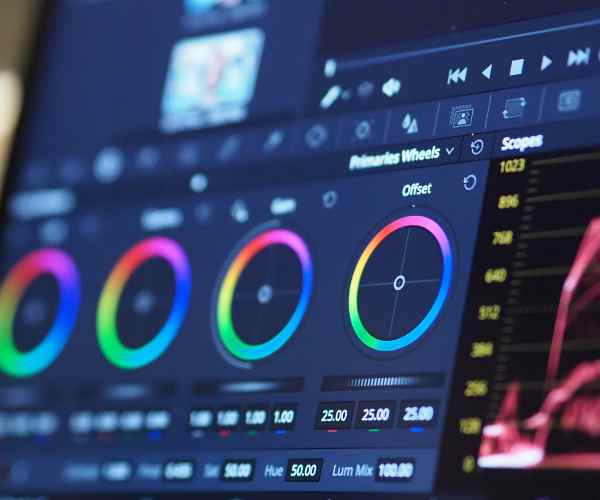Sarah is a young model who began in Commercial Modeling as she was selling anything from kitchen appliances to sportswear with her engaging and relatable look. Her career took a different path when a fashion magazine decided to reach her for a photoshoot for print modeling. The transition from depicting the girl next door in commercials to being the face of high fashion in prints was simply astonishing. Through Sarah’s experience, one understands that modeling can arguably be one of the most ever changing and versatile industries where diversity coupled with adaptability is the key.
Within the fashion world and advertising there are two main careers lines, Commercial Modeling and Print Modeling. Commercial modeling is all about products and services and getting them to the consumers, usually by portraying someone or something relatable that has a story or lifestyle attached to it. Whereas print modeling is more about the artistic side of magazines, and posing for advertisements on billboards and within fashion catalogs, it is more print modeling than commercial modeling which seeks to attract through images. There are two efforts to spell out this purpose, which is unifying to those activities – to present a visual story to other people.

Anyone aiming to establish themselves in the modeling industry needs to comprehend the differences between commercial v/s print modeling. It is not just a matter of pleasing a particular look, but it is also about how to identify one’s own characteristics and know which modeling area will work for them. Understanding this orientation is essential as it is the first step to building a the right modeling career.
Key Differences Between Commercial and Print Modeling
The Intent Behind the Shoot
The main difference between commercial and print modeling is how they intend a specific photoshoot to end up. Bridging the gap between a consumer and a product/service is called commercial modeling. It is a vast scope encompassing everything from modelwear to digital printing. The market often looks out for models that can project a look and an attitude that the target buyers can relate and connect to, hence enhancing their consumption of the product or service. A commercial fitness model for a fitness company, it would promote the idea that through the right tools any consumer can be set in motion that is the kind of lifestyle that the brand is selling.
Print models tend to be more cut out when it comes to features or looks due to the physical attributes they need to showcase. A print model however can be someone who has a look that only works in strict niche markets, like high fashion shoes or a specific cut of a dress. A model can be surrounded or championed in many ways, around or in sure niches only to help promote ads and campaigns, which allows many diverse and visionary stories to be spun. In this case, a model can be showcased in magazine spreads that showcase fashion without branding.
Role of a Commercial Modeller – Expectations, Requirements, Limitations
When talking to someone who is looking to be a commercial face for specific brands, they are hired considering there niche audience, this in turn allows for cuts to be made in terms of promotions.
It is common knowledge that the commercial modeling industry is quite somewhat of a basic fashion since more often than not they are looking for models who possess an “everyday looking face” and can sell products in the market. This category does not completely follow strict height restrictions and size requirements either. It rather prefers more of a universal look to appeal to more consumers. For example, an ad for a family-oriented good may require models of all ages and body sizes because families are such. Even a recent report published in the industry mentions that 5’6′ to 5’11’ is acceptable for most commercial models which is much easier than fitting into the fashion model’s standard.
In contrast, it is well known that print modeling, especially in high fashion or editorial contexts, has some physical requirements. For example, models are noted to have to be a certain height and size, 5’9” to 6’0” for female models who have measurements that are almost exactly one of the sample sizes, approximately 34-24-34 inches. This is partly because of the character of high fashion garments which are produced to these idealized physical characteristics with an aim of achieving a certain type of body shape on the runway or in photos. Research conducted and published in the Journal of Fashion Marketing and Management indicates that 80% of the models in high fashion campaigns are within a 2-inch height variance of one another, emphasizing the measures of the industry.
The Duration and Type of Campaigns
Campaigns in the modeling industry and their purposes and periods differ in the first place because there is commercial and print advertising which has an impact on the modeling recruitment.
Commercial models can be engaged in a variety of tasks that can be either engaged on a short-term or long-term basis. Some tasks that take a short-term basis consist of a one day shoot advertisement on the other hand there are long engagements where a model works with the same brand for an extended time period. Such relationships, which can be long-term, do help a commercial model have more fulfillment and modeling endurance in general. For instance, a model “might enter a one-year contract of endorsement with a fashion firm and endorses all their products in adverts, social networks and other marketing materials”. Such an arrangement offers regular engagement and goes a long way towards developing a good working bond between the model and the firm.
Around the globe, there is a large difference in the social perception between models doing editorial, magazine, or fashion work. On the contrary, print and catalog modelling services are believed to be much simpler. The fashion image that has been projected by magazines is significantly different than that shown on a catalog as the time for a catalog model is much less than that of a magazine. These are generally referred to as editorial, high fashion or print image modeling. When fashion designers have their works shown during fashion weeks, a model can work for numerous designers and be in hundreds of picture spreads in only only a few days.
The travail of an editorial model as it has been described is not that easy as it appears: Fashionistas mention that during peak seasons, models literally are capable of having more than ten editorial pictures in a matter of a few weeks with 5 or 6 per month otherwise, making an average turnaround of the shoots less than a day.
Kendall Jenner is a good example of how someone can optimize their looks to quickly and highly become successful in modelling. She successfully became a print model as well as a commercial model by utilizing her features correctly.
Instead of only focusing on her fame, Kendall Jenner is a very strategically wise model. She has graced high-fashion editorial spreads in Vogue and Harper’s Bazaar and has done high-end fashion shows for Chanels and Givenchy. At the same time, Jenner was able to feature in advertisement campaigns for international corporations including Adidas and Estée Lauder, which made her attractive to a larger number of people. She is able to effortlessly switch from the world of high fashion to selling clothes on television which is a perfect example of what models are meant to do.
An equally teachable person is Gigi Hadid, as she has also been able to sit on the fence between commercial and print modeling. Hadid’s work includes pulling off grunge and other fashion styles for magazines to working with Maybelline, proving that understanding the brand and being versatile pays off in all areas of modeling.
How do you know which form of modeling best fits you?
When it comes to distinguishing commercial modeling from print modeling the first thing one needs to do is look into one’s abilities, appearance, and aspiration. These criteria have to be taken into consideration: the way you look and how you manage to interact with the audience who might be perceiving you. In time, fun and versatile models are needed as nowadays there are many brands and agencies which want a variety of models with a broad spectrum of looks.
One possible way is to claim the certain advertisements or editorials you have liked in the certain publications. Do you associate more with the commercials incorporated in retail such as advertisements promoting stories? Or vice versa, do you prefer the advertising image of the brand that is more focused on the aesthetics and prints such as editorial modeling? The way people like watching commercials or magazine covers which might depict scenes of dull life or a over-the-top fantasy world can help inform their decisions on which career to pursue.
The internet has also improved the visibility of models as they are now able to show the agencies and the world who they are and what they can deliver. Using these technologies allows for the display of an individual look and appeal prospects that are either commercial campaigns or editorial placements.
Building a Portfolio Which Gets You Jobs
Constructing a portfolio which encapsulates one’s unique look and appeal is crucial in getting the attention of both commercial and print modeling agencies. For starters, working with professional photographers who can photograph different aspects of one’s character and style is key. It is important that these photographs demonstrate not only the model’s range of looks but also the diversity of the prevailing looks in the fashion scope, showing that the model is indeed relevant and sellable.
A model’s portfolio should contain headshots, full length shots or body pictures, as well as editorial photographer in which the model is telling or feeling something. If you’re more into commercial modeling, you should add shots from your current campaigns, how you appear in everyday life, and sport and beauty shots that will help a broad audience relate to you. On the other hand, those who are into print modeling should look for more contemporary high fashion pictures that show an understanding of different looks and concepts.
Staying in the realm of current trends in fashion and matching your portfolio is essential, but so is being authentic to what you are as an individual. When marketing oneself to agencies and brands, it is usually more than just a diverse portfolio but how well one understands the industry and the area in which they would fit into the fast-paced modeling industry.
FAQs
How Do the Rates for Print and Commercial Modeling Differ?
In comparing the print and commercial modeling forms of compensation, there is quite a gap which can be attributed to the client’s campaign and budget. In most cases, commercial model earnings are more stable due to advertisement and catalog works and the amounts payable depend on the scale of the brand and the nature of the advertisement campaign model. For instance, a local brand can pay between $200 to $500 for a commercial models shoot lasting one day depending on the order size and the brand, while national campaigns and long-term contracts with larger brands pay better rates.
Print models, especially those working in the high fashion editorial realm, receive compensation that varies quite significantly. Structured shooting for editorial magazines that are considered respectable may not pay the best, but over time or few years can put the model into a lot of advertising since his visibility increases These days, most top models of the fashion world get paid up to thousands for one campaign, this goes to show how competitive and visible the world of high fashion is.
How do I Break in Commercial and Print Modeling?
When moving into the commercial or print space, it is important to stay portfolio centric, possess market understanding and engage with the right agencies. For commercial modeling, hone in on your skills of versatility and understanding the brand and product that you wish to endorse. Go to open calls from agencies that has a known background in commercial work. You can also opt for a couple of acting classes or improvisation classes to better enable you to perform for the camera and convers the audience.
In case you want to delve into print marketing,including high fashion modeling,it will be ideal if you have a portfolio showcasing your own style and ability to portray other fashions as well. You may also meet other top agencies’ scouts while attending modeling conventions or while networking. Be sure to check other agencies because they are important to the growth of your career and this is if they have a well-established history in the management of print models.
How To Choose Modeling Agencies You Can Trust?
The issues surrounding locating a model agency in this space are vast and for many embody a crucial point of determining how successful your modeling career will be. A great place to begin is by compiling a list of relevant agencies for seeking commercial or print models. Select the agencies where they have a strong presence in your target market and are already working with the type of customers you intend to be working with. In some cases participants attend modeling events and from such events have been discovered others simply visit the agency website and go through the submission procedures listed on the agency’s website.
Another option for which aspiring washed up models would try would be Instagram, that is explaining Instagram’s popularity to a large extent in most of the countries. If that is the case, it would make sense to first communicate through the official channels. Attending modeling conventions or open calls is ideal as they aid in building wider networks in the industry. Remember, reputable agencies will never ask for money up front to represent you.
What new standards are being introduced to models these days?
New standards of models are being introduced that are margin respect for greater inclusion and more diversity. The fitness models, models with smaller frames, and the advocates for body positivity are being accepted and required. More clients and agencies realize the benefits of being real and relatable, hence the rise in demand for models of different shapes, sizes, ages, and skin color.
Also, while millions of sources seek social media influencers the role of social media influencers on the modeling industry should also be brought into the spotlight. Influencers that possess strong following and fan engagement always get the chance to model thus separating and joining influencer marketing and modeling. This phenomenon emphasizes the role of self-promotion and internet activity in the life of model wannabes in the present setting.
Conclusion
The modeling industry is rapidly changing and very complex starting with commercial modeling and print which are just a few channels for the budding models. But while they are different in terms of possibilities and challenges presented to the individual seeking a career in modeling they still have some things in common such as understanding of the target market and love for self and professionalism.
Commercial modeling is wonderful because it allows the models to interact with the customers and offer them different kinds of goods and services which might ensure that the model is busy and paid consistently. While commercial or print modeling has its demerits, modeling in high fashion and editorial print allows one to participate in more artists or campaigns which are likely to make or break a model.
If you want to become a model, you should not be content with just one of the two pathways and experiment more. It is important to keep an eye on current trends, as well as to be supple and use one’s personal history. In short, patience and wise career choices let the model survive the industry’s twists and turns and finally reach their career goals.
More Post






